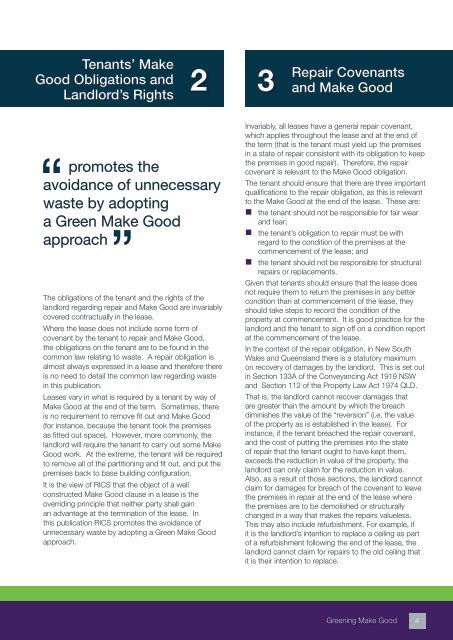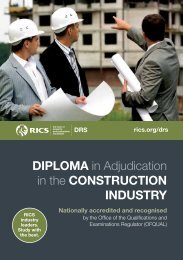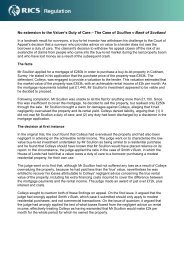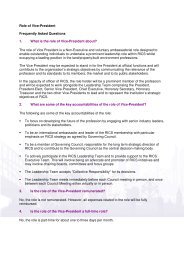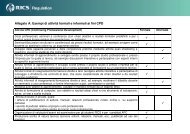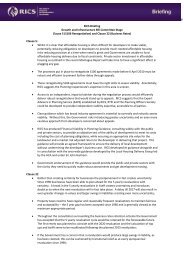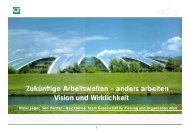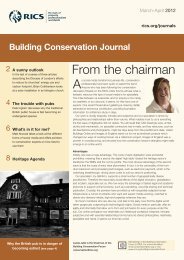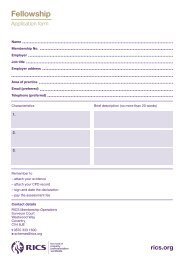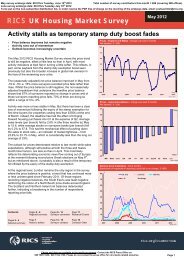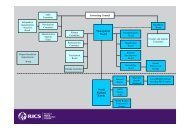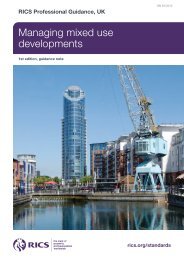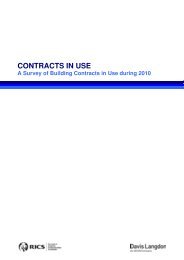Create successful ePaper yourself
Turn your PDF publications into a flip-book with our unique Google optimized e-Paper software.
Tenants’ <strong>Make</strong><br />
<strong>Good</strong> Obligations and<br />
Landlord’s Rights 2<br />
promotes the<br />
avoidance of unnecessary<br />
waste by adopting<br />
a Green <strong>Make</strong> <strong>Good</strong><br />
approach<br />
The obligations of the tenant and the rights of the<br />
landlord regarding repair and <strong>Make</strong> <strong>Good</strong> are invariably<br />
covered contractually in the lease.<br />
Where the lease does not include some form of<br />
covenant by the tenant to repair and <strong>Make</strong> <strong>Good</strong>,<br />
the obligations on the tenant are to be found in the<br />
common law relating to waste. A repair obligation is<br />
almost always expressed in a lease and therefore there<br />
is no need to detail the common law regarding waste<br />
in this publication.<br />
Leases vary in what is required by a tenant by way of<br />
<strong>Make</strong> <strong>Good</strong> at the end of the term. Sometimes, there<br />
is no requirement to remove fit out and <strong>Make</strong> <strong>Good</strong><br />
(for instance, because the tenant took the premises<br />
as fitted out space). However, more commonly, the<br />
landlord will require the tenant to carry out some <strong>Make</strong><br />
<strong>Good</strong> work. At the extreme, the tenant will be required<br />
to remove all of the partitioning and fit out, and put the<br />
premises back to base building configuration.<br />
It is the view of <strong>RICS</strong> that the object of a well<br />
constructed <strong>Make</strong> <strong>Good</strong> clause in a lease is the<br />
overriding principle that neither party shall gain<br />
an advantage at the termination of the lease. In<br />
this publication <strong>RICS</strong> promotes the avoidance of<br />
unnecessary waste by adopting a Green <strong>Make</strong> <strong>Good</strong><br />
approach.<br />
3<br />
Repair Covenants<br />
and <strong>Make</strong> <strong>Good</strong><br />
Invariably, all leases have a general repair covenant,<br />
which applies throughout the lease and at the end of<br />
the term (that is the tenant must yield up the premises<br />
in a state of repair consistent with its obligation to keep<br />
the premises in good repair). Therefore, the repair<br />
covenant is relevant to the <strong>Make</strong> <strong>Good</strong> obligation.<br />
The tenant should ensure that there are three important<br />
qualifications to the repair obligation, as this is relevant<br />
to the <strong>Make</strong> <strong>Good</strong> at the end of the lease. These are:<br />
the tenant should not be responsible for fair wear<br />
and tear;<br />
the tenant’s obligation to repair must be with<br />
regard to the condition of the premises at the<br />
commencement of the lease; and<br />
the tenant should not be responsible for structural<br />
repairs or replacements.<br />
Given that tenants should ensure that the lease does<br />
not require them to return the premises in any better<br />
condition than at commencement of the lease, they<br />
should take steps to record the condition of the<br />
property at commencement. It is good practice for the<br />
landlord and the tenant to sign off on a condition report<br />
at the commencement of the lease.<br />
In the context of the repair obligation, in New South<br />
Wales and Queensland there is a statutory maximum<br />
on recovery of damages by the landlord. This is set out<br />
in Section 133A of the Conveyancing Act 1919 NSW<br />
and Section 112 of the Property Law Act 1974 QLD.<br />
That is, the landlord cannot recover damages that<br />
are greater than the amount by which the breach<br />
diminishes the value of the “reversion” (i.e. the value<br />
of the property as is established in the lease). For<br />
instance, if the tenant breached the repair covenant,<br />
and the cost of putting the premises into the state<br />
of repair that the tenant ought to have kept them,<br />
exceeds the reduction in value of the property, the<br />
landlord can only claim for the reduction in value.<br />
Also, as a result of those sections, the landlord cannot<br />
claim for damages for breach of the covenant to leave<br />
the premises in repair at the end of the lease where<br />
the premises are to be demolished or structurally<br />
changed in a way that makes the repairs valueless.<br />
This may also include refurbishment. For example, if<br />
it is the landlord’s intention to replace a ceiling as part<br />
of a refurbishment following the end of the lease, the<br />
landlord cannot claim for repairs to the old ceiling that<br />
it is their intention to replace.<br />
<strong>Greening</strong> <strong>Make</strong> <strong>Good</strong> 4


